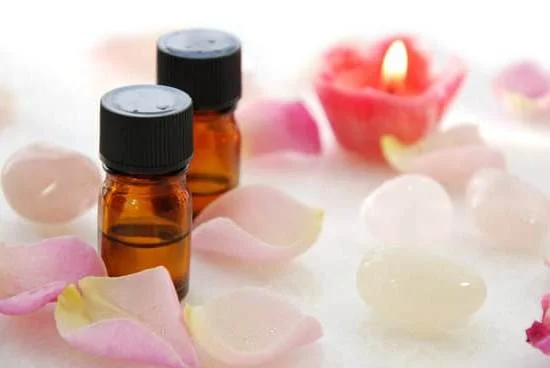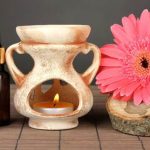Are you interested in learning how to make aromatherapy beeswax candles? Aromatherapy is a holistic healing treatment that uses natural plant extracts to promote health and well-being. When combined with the soothing properties of beeswax, it creates a unique and therapeutic experience. In this article, we will explore the benefits of using beeswax in candle making, understanding aromatherapy and its benefits, and a step-by-step guide to creating your own aromatherapy beeswax candles.
Beeswax has been used for centuries in the making of candles due to its clean-burning and long-lasting properties. It is a natural wax produced by honeybees and has a sweet, subtle honey-like fragrance. When used as a base for aromatherapy candles, it provides a warm glow and releases negative ions that can help purify the air. Additionally, when combined with essential oils, it can enhance the therapeutic benefits of aromatherapy.
Aromatherapy is the practice of using natural oils extracted from flowers, bark, stems, leaves, roots or other parts of a plant to enhance psychological and physical well-being. Each essential oil has its own unique properties that can be used for relaxation, stress relief, improved sleep, mood enhancement, and overall wellness. By integrating the benefits of aromatherapy with the natural properties of beeswax candles, you can create a harmonious environment that promotes relaxation and rejuvenation.
Benefits of Using Beeswax in Candle Making
Environmental Benefits
Beeswax is a natural, renewable resource that is obtained from honeycombs. It is biodegradable and non-toxic, making it an eco-friendly choice for candle making. Unlike paraffin candles, which are derived from petroleum, beeswax candles do not release harmful chemicals into the air when burned. This makes them a healthier option for both the environment and those who use them.
Health Benefits
Beeswax candles produce negative ions when burned, which can help to neutralize pollutants in the air. This can reduce indoor air pollution and improve respiratory health. Additionally, beeswax emits a subtle, natural honey scent when burned, providing a soothing and calming atmosphere. For individuals with allergies or sensitivities to artificial fragrances, beeswax candles offer a gentle alternative.
Performance Benefits
In addition to their environmental and health benefits, beeswax candles also offer superior performance compared to other types of wax. They burn longer and cleaner than paraffin or soy candles, meaning they provide better value for money. The natural golden color of beeswax adds a warm and inviting glow to the candle flame, enhancing the ambiance of any space. The addition of essential oils for aromatherapy purposes further enhances their therapeutic properties.
By understanding the numerous benefits of using beeswax in candle making, you can make informed choices when creating your own aromatherapy beeswax candles at home.
Understanding Aromatherapy and Its Benefits
Aromatherapy is the practice of using natural oils extracted from flowers, bark, stems, leaves, roots or other parts of a plant to improve physical and psychological well-being. These essential oils can be used in a variety of ways, including in aromatherapy beeswax candles. Aromatherapy has been practiced for centuries and is believed to have originated in ancient Egypt. This section will explore the benefits of aromatherapy and how it can be incorporated into beeswax candle making.
One of the key benefits of aromatherapy is its ability to promote relaxation and reduce stress. Certain essential oils such as lavender, chamomile, and sandalwood are known for their calming properties and are commonly used in aromatherapy practices. When these oils are infused into beeswax candles, they can create a soothing and calming atmosphere in any space.
In addition to promoting relaxation, aromatherapy has also been shown to have mood-boosting effects. Essential oils like citrus, peppermint, and rosemary are known for their energizing and uplifting properties when used in aromatherapy practices. By incorporating these oils into beeswax candles, you can create an environment that promotes positivity and mental clarity.
| Aromatherapy Benefit | Essential Oils |
|---|---|
| Promotes relaxation | Lavender, Chamomile, Sandalwood |
| Mood-boosting effects | Citrus, Peppermint, Rosemary |
Choosing the Right Essential Oils for Aromatherapy Candles
When making aromatherapy beeswax candles, choosing the right essential oils is crucial to create a pleasing and effective scent. Essential oils have various therapeutic properties, and selecting the right ones can enhance the benefits of your candles. Start by considering what mood or atmosphere you want to create with your candles, whether it’s relaxation, energy, focus, or stress relief.
To begin, it’s important to understand the different properties of essential oils. For example, lavender oil is known for its calming and relaxing effects, while peppermint oil is invigorating and can help with mental clarity.
Citrus-based oils like lemon or orange are uplifting and refreshing, perfect for creating a positive environment in your space. Doing thorough research on essential oils and their properties will help you make informed decisions when choosing which ones to use in your candle-making process.
Once you have a good understanding of essential oil properties, consider creating unique scent blends by mixing different oils together. This allows you to customize the aroma of your candles to suit your preferences or even to target specific aromatherapy benefits. For example, blending lavender and bergamot can create a soothing and stress-relieving scent, perfect for relaxation before bedtime or during meditation sessions.
Step-by-Step Guide to Making Aromatherapy Beeswax Candles
Gathering the Materials
Before you start making your aromatherapy beeswax candles, it’s important to gather all the necessary materials. You will need beeswax, wicks, essential oils, a double boiler, a thermometer, and candle molds. Make sure to choose high-quality beeswax and wicks to ensure a clean and long-lasting burn for your candles. Additionally, select essential oils that complement each other and promote relaxation, focus, or whatever mood you want to achieve with your candles.
Preparing the Beeswax
Once you have gathered all the materials, it’s time to prepare the beeswax for melting. Use a double boiler to melt the beeswax slowly over low heat. It’s important to monitor the temperature of the wax using a thermometer to prevent it from getting too hot. Overheating can cause discoloration and diminish the therapeutic properties of the beeswax and essential oils.
Adding Essential Oils
After the beeswax has melted completely, remove it from the heat and let it cool slightly before adding your chosen essential oils. The amount of essential oil you add will depend on how strong you want the scent of your candles to be.
Stir the essential oils into the melted beeswax thoroughly to ensure an even distribution of fragrance throughout the candle. Be mindful not to over-fragrance your candles as this may lead to irritation or decreased therapeutic effects when burning.
Making aromatherapy beeswax candles is a rewarding craft that allows you to create personalized scents that promote well-being and relaxation. By following these steps and experimenting with different essential oil blends, you can enjoy unique aromatherapy experiences in the comfort of your own space.
Tips for Scent Blending and Creating Unique Aromatherapy Blends
When it comes to creating unique aromatherapy blends for beeswax candles, the possibilities are endless. The key to a successful blend is understanding the properties of different essential oils and how they can complement each other. Here are some tips for scent blending and creating one-of-a-kind aromatherapy blends:
- Consider Middle and Top Notes: Once you have selected your base note, it’s time to add middle and top notes to create complexity in your aromatherapy blend. Middle notes such as lavender, rosemary, and chamomile provide balance to the blend, while top notes like citrus oils (lemon, orange) add a refreshing and uplifting quality.
- Experiment with Ratios: Finding the right balance of base, middle, and top notes is crucial for creating a harmonious blend. Start by experimenting with different ratios of essential oils until you achieve the desired scent profile. Keep track of your experiments so you can recreate successful blends in the future.
In addition to understanding the properties of various essential oils, consider the therapeutic benefits of each oil when creating aromatherapy blends. For example, if you want to create a calming blend, consider using lavender as a middle note along with cedarwood as a base note for grounding.
Creating unique aromatherapy blends for beeswax candles is a creative process that allows you to tailor scents to suit different moods or occasions. Take your time experimenting with different combinations and don’t be afraid to think outside the box when it comes to blending essential oils.
Remember that scent is subjective, so what may be appealing to one person may not be as enjoyable to another. Trust your instincts and create blends that resonate with you personally while also considering who your target audience might be. By following these tips and guidelines on how to make aromatherapy beeswax candles through scent blending techniques will help you create truly unique and delightful aromas for your homemade candles.
Decorating and Packaging Your Aromatherapy Beeswax Candles
When it comes to decorating and packaging your aromatherapy beeswax candles, there are endless possibilities to make them stand out and look appealing. Here are a few tips to help you create beautifully decorated and packaged candles:
- Choose the right container: Select a container that complements the scent and color of your candle. Whether it’s a mason jar, tin, or glass votive, the container will be an important part of the overall look of your candle.
- Add decorative elements: To enhance the visual appeal of your candles, consider adding decorative elements such as dried flowers, herbs, or colorful wax embeds. You can also use ribbons, twine, or charms to adorn the containers.
- Create personalized labels: Design and print labels for your candles that include the name of the scent, ingredients used, and any safety information. Personalized labels add a professional touch to your candles and provide important information for buyers.
Packaging is just as important as decoration when it comes to presenting your aromatherapy beeswax candles. Consider these tips for packaging your candles:
- Use eco-friendly materials: Choose sustainable and biodegradable packaging materials such as recycled cardboard boxes or paper bags. This not only reduces environmental impact but also adds value to your product.
- Provide information: Include a small pamphlet or tag with information about the benefits of aromatherapy, how to use the candle safely, and care instructions for best results.
- Add a personal touch: Consider adding a handwritten thank-you note or a small free sample with each purchase. Building a personal connection with customers can lead to repeat business and positive word-of-mouth recommendations.
With these tips in mind, you can create beautiful aromatherapy beeswax candles that not only smell amazing but also look visually appealing and professional.
By paying attention to these details when decorating and packaging your aromatherapy beeswax candles, you will add value to your products and increase their appeal to potential customers.
Safety Precautions and Best Practices for Candle Making
When it comes to making aromatherapy beeswax candles, safety should always be a top priority. Beeswax has a higher melting point compared to other waxes, so it’s crucial to take extra precautions to prevent any accidents. Before starting the candle-making process, make sure to read and understand the safety guidelines for working with beeswax and essential oils.
One of the most important safety precautions when making aromatherapy beeswax candles is to use a double boiler or dedicated wax melter to heat the beeswax. This helps reduce the risk of fire and overheating. It’s also recommended to keep a fire extinguisher nearby just in case of any emergencies. Additionally, wearing protective gear such as gloves and goggles can help prevent burns and accidental exposure to hot wax.
In addition to safety precautions, there are also best practices that can enhance your candle-making experience. One useful tip is to create a well-ventilated space for candle making, as beeswax and essential oils can produce strong odors when heated. This will also help in preventing inhalation of harmful fumes. Furthermore, always follow precise measurements and instructions when adding essential oils to ensure the proper scent strength and avoid overpowering or underwhelming aromas.
| Safety Precautions | Best Practices |
|---|---|
| Use a double boiler or dedicated wax melter | Create a well-ventilated space for candle making |
| Keep a fire extinguisher nearby | Follow precise measurements when adding essential oils |
Conclusion
In conclusion, learning how to make aromatherapy beeswax candles can be a rewarding and fulfilling experience. By using natural beeswax and essential oils, you not only create a beautiful product but also reap the benefits of aromatherapy. The soothing scents and calming properties of these candles can enhance your overall well-being and promote relaxation in your daily life.
With the benefits of using beeswax in candle making, such as longer burn time and air purification, aromatherapy beeswax candles are a great choice for creating a warm and inviting atmosphere in your home. Additionally, understanding the properties of different essential oils and learning how to blend them can help you create unique and personalized scents that cater to your specific needs and preferences.
As you go through the step-by-step guide, remember to always prioritize safety precautions and best practices for candle making to ensure a smooth and enjoyable process. From choosing the right essential oils to decorating and packaging your candles, each step contributes to the overall quality of your finished product. So go ahead, dive into the world of aromatherapy beeswax candle making and start enjoying all the amazing benefits it has to offer.
Frequently Asked Questions
Can You Make a Candle With Beeswax and Essential Oils?
Yes, you can make a candle with beeswax and essential oils. Beeswax provides a natural base for the candle, while essential oils add fragrance. By properly blending the two ingredients, you can create a beautifully scented beeswax candle.
Can You Add Fragrance to Beeswax Candle?
Adding fragrance to beeswax candles is possible by incorporating essential oils into the wax during the candle-making process. This allows the scent to be dispersed when the candle is burned, creating a pleasant aroma in the air. However, it’s important to use high-quality essential oils for the best results.
Do You Need to Add Anything to Beeswax to Make Candles?
Typically, you don’t need to add anything to beeswax to make candles. Beeswax has its own natural aroma and ability to hold color well. However, some candle makers may choose to add essential oils or other fragrances for a customized scent. Additionally, wicks are necessary for burning, but these are not added directly to the beeswax mixture.

Are you looking for a natural way to improve your health and wellbeing?
If so, aromatherapy may be the answer for you.





